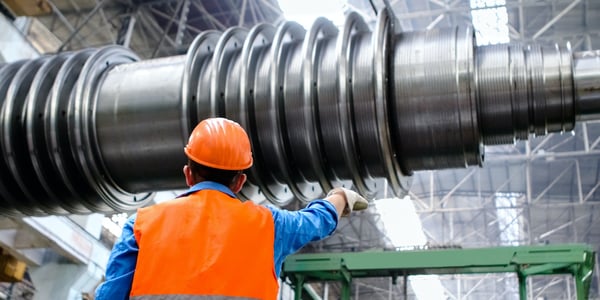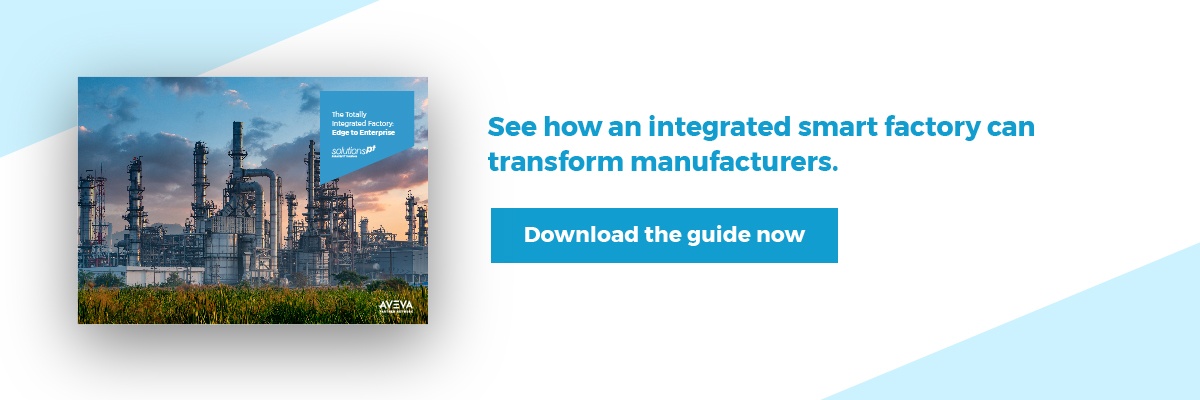HMIs are part of wider SCADA systems that factories rely on. You’ll already know the role both HMIs and SCADA play and how crucial they are to overall productivity and efficiency. But are you getting the most from these technologies?

It might seem as though everything is running smoothly, but you could be missing out. Here are a few best practices to follow when it comes to HMI and SCADA integrations.
- Choose Standards Based Systems
- Build Systems with Change in Mind
- The Importance of Connectivity
- Understand the User
- Be Aware of Security and System Architecture
How to Build an Effective HMI and SCADA System
1. Choose Standards Based Systems
You’ll find systems that allow you to build a global library of standards quicker to design, develop and deploy. The more they’re designed with a common and reusable set of standards in mind, the easier your teams will find it in the future to scale and maintain your system.
By choosing standards-based systems that do much of the work for you, it’s easier to dedicate time and resources elsewhere. Think about symbol libraries, for example. It’s far easier to work with solutions that come standard with graphical symbols that already align with ISA101 requirements.
Standards based monitor and control systems simplify change governance across large enterprises, enabling you to reuse master libraries that enforce individual site adherence to your global standards.
2. Build Systems with Change in Mind
Before undertaking any major system configurations, it’s vital you have a lifecycle management plan in place. Outline when you expect you’ll need to upgrade systems and how you’ll continuously evolve it over time.
Because these systems can require significant investment on your part, it’s important to protect that investment in the long run. When choosing integrations, partners, and systems, consider how future proof they are and if they’ve been designed with scalability in mind.
Full scalability is key to the true value and total longevity of any Supervisory Control and Data Acquisition (SCADA) solution. It’s best practice to have a solution which will adapt over time and seamlessly integrate with systems you might not actually use yet.
A truly scalable implementation that’s easy to use and equipped with extensive functionality is a sound supervisory software solution ready for future change.
3. The Importance of Connectivity
.jpg?width=1400&name=engine-graphic@2x%20(1).jpg)
Your factory is made up of a versatile range of PLCs, RTUs and DCS. All of them play a vital role and need to be considered when you think about HMI and SCADA integrations.
Make an extensive list of all the different industrial processes and systems the factory utilises each day. This covers the obvious stuff mentioned above but also things like ERP systems and anything that focuses on maintenance, quality, process control or equipment utilisation and performance.
The last thing you want is to attempt an implementation, only to realise wide-scale connectivity is impossible. A network that’s fully connected across all these systems will lead to greater visibility, productivity, and profitability.
Connectivity extends to the devices that workers will use daily. If your network is accessible on multiple devices, then there are fewer awkward bottlenecks. Everyone can access the data and systems they need quickly and easily.
Again, it’s important to always have one eye on the future. Industrial IoT systems, including support for MQTT, might not be top of the list right now. However, they’ll be vital in the future, so it’s better to be ready now.
4. Understand the User
Systems should be built with the human operator in mind. This is such a crucial point I’m going to say it again.
Systems should be built with the human operator in mind.
Smart factories are designed in such a way that they empower users with the right information, at the right time and in the right context. If information is easily accessible and systems are intuitive to use, users can collaborate together effectively and respond to abnormal situations quicker.
Traditional HMI systems are often unnecessarily complicated. There’s just too much going on in the HMI screen for the user to gain a full understanding of a situation. This causes delays and errors which ultimately frustrates the user and impacts production.
Best practice is always to find systems that offer good user experience which adhere to the standards of ISA101. The result will be empowered users who can access vital information without distraction.
5. Be Aware of Security and System Architecture
Systems need to be designed so they’re both safe and secure. Information should flow across the enterprise without there being any safety or security concerns.
With so much moving information, you need to ensure it’s accessed in a way that doesn’t compromise the integrity of the system. Take traditional PLCs. They weren’t designed to be secure which can have serious repercussions.
Whether it’s from internal or external threats, you need to ensure systems are robust and secure enough to protect against cyberattacks. If data is accessed, it damages your reputation as it highlights your failure to secure your systems. This loss of trust is something organisations have learnt the hard way.
Ready to Design a Smart Factory?
From edge to enterprise, we’ve outlined exactly what a smart factory can look like - not just in the future, but now. Download our free resource for a closer look at the improved connectivity it brings and see how it can transform your business. Get your copy now using the link below. 

![[FREE GUIDE] EMBRACING NEW TECHNOLOGY TO TRANSFORM YOUR FACTORY](https://no-cache.hubspot.com/cta/default/4487147/9d21f2d1-3cef-4512-b927-eb448cf098a0.png)
